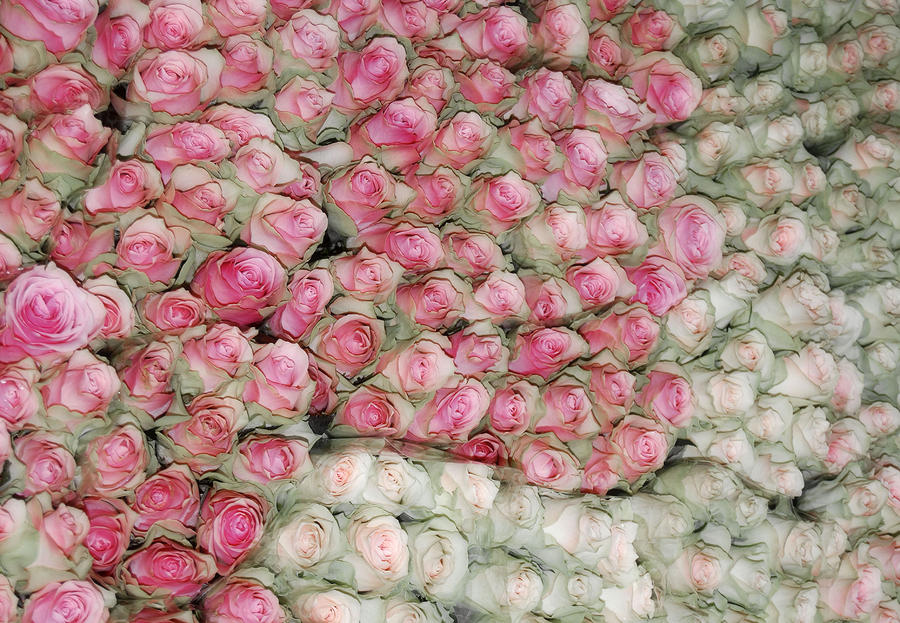


A Picture of Roses
This site is dedicated to appreciating the roses painted by the artist, Pierre-Joseph Redouté (1759-1840).
Who’s Pierre-Joseph Redouté?
P.J. Redouté, esteemed by his peers as the ‘Raphael of flowers’, is perhaps the most well-known botanical artist of all time. He devoted his life to plant illustration and his exquisite rose portraits are especially well known and loved. Even if you don't recognise the name Redouté, you may have seen his rose pictures as framed art prints, or used commercially to decorate anything from a greeting card to a coffee cup.
View the complete collection of Redouté's roses online
Close to 200 of Redouté's roses, from both prints and original paintings, are represented on this site. Every rose from the books, Les Roses and Choix des Plus Belles Fleurs is pictured here, plus an assortment of other roses Redouté painted during his lifetime. In addition to its picture, for each rose you can view information about its nature, history and cultivation, which we'll keep expanding as time permits.
For convenience the rose pictures are arranged by collection, by colour and by class.
Plus there’s the fully ‘assortable’ Master List so you can look a rose up by its botanical or common names.
For convenience the rose pictures are arranged by collection, by colour and by class.
Plus there’s the fully ‘assortable’ Master List so you can look a rose up by its botanical or common names.
A picture of roses: What do you imagine?
Most of the roses Redouté painted look nothing like the classic long-stemmed roses you’ll find in florist shops come Valentine’s Day or Mother’s Day. If you’re wondering why not, the answer lies in the history of the modern rose.
For over a century now, the most common roses have belonged to the class of rose known as the ‘Hybrid Tea’. These are the roses of our popular culture – the ones you’ll most commonly buy from the florist and see growing in gardens. But these roses are not, as is sometimes thought, exclusively European or English in origin. Instead they are a multi-cultural blend of East meets West.
When Redouté lived during the 18th and 19th centuries, it was a time of great discovery as European botanists were allowed into China for the first time. They brought back to Europe roses that although new to the West, were old varieties long-grown in Chinese gardens. When these roses were bred with the roses already in Europe, a revolution started that saw thousands of new varieties emerge. But this revolution had barely begun when Redouté lived. The classic modern rose did not yet exist. Instead many of the roses Redouté painted were roses that would, in time, become its ancestors. These forebears and all roses known prior to 1867 are now classified as ‘Old Garden Roses’ or ‘Old Roses’ for short. They are also called ‘Heritage Roses’, ‘Antique Roses’ and ‘Vintage Roses’.
When Redouté lived during the 18th and 19th centuries, it was a time of great discovery as European botanists were allowed into China for the first time. They brought back to Europe roses that although new to the West, were old varieties long-grown in Chinese gardens. When these roses were bred with the roses already in Europe, a revolution started that saw thousands of new varieties emerge. But this revolution had barely begun when Redouté lived. The classic modern rose did not yet exist. Instead many of the roses Redouté painted were roses that would, in time, become its ancestors. These forebears and all roses known prior to 1867 are now classified as ‘Old Garden Roses’ or ‘Old Roses’ for short. They are also called ‘Heritage Roses’, ‘Antique Roses’ and ‘Vintage Roses’.
Old Roses revived
Although many Old Roses have been lost to history, others have survived to this present day.
Over the last few decades there's been a resurgence of interest in growing and learning about Old Roses. As well as having a unique beauty, Old Roses are often very fragrant, the ones that have survived the test of time are commonly disease resistant and all have the added bonus of a long and often intriguing history. Old Roses are also providing inspiration for modern rose breeders such David Austin and the ‘English Roses’ he’s developed over the last 40 years. These he describes as ‘new’ Old Garden Roses and their introduction has inspired many people to revisit and appreciate the Old Roses of bygone days.
If Redouté were alive today…
No doubt, if Redouté could be alive in the 21st century, he'd be amazed that from the few hundred varieties of rose known in his time, a staggering 40 000 have been bred in the time since. It’s not hard to imagine that he’d feel satisfied to know, that as well as being among the ancestors of these modern roses, some of the varieties he painted nearly 200 years ago are still growing in gardens today.
A few words from the Master…
‘I therefore here dedicate my pictures to disciples of botany, to emulators in industry, to friends of the arts, to admirers of nature and to students who have devoted themselves to the study of an art...to which I have given all my love in return for some degree of fame.’
From the preface to 'Choix des Plus Belles Fleurs' (Redouté's Fairest Flowers).




















 Josephine, wife of Napoleon Bonaparte, was known for her spectacular garden at Chateau de Malmaison, where exotic plants were cultivated. The plants, acquired from around the world, were documented by France’s leading horticulturists and botanists, and painted by Pierre-Joseph Redouté.
Josephine, wife of Napoleon Bonaparte, was known for her spectacular garden at Chateau de Malmaison, where exotic plants were cultivated. The plants, acquired from around the world, were documented by France’s leading horticulturists and botanists, and painted by Pierre-Joseph Redouté.




